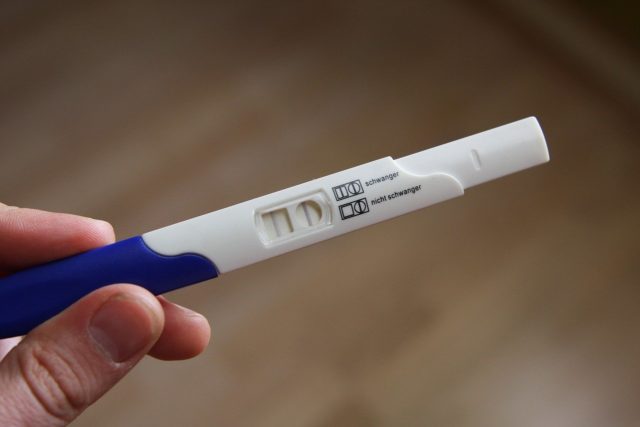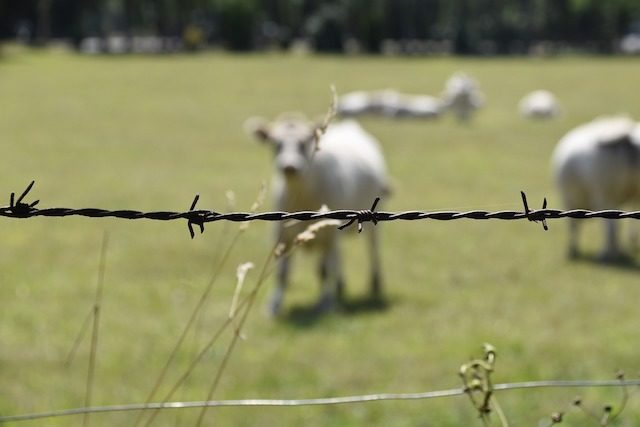You've heard more than once an older person begin a sentence with the words "back in my day." The world was different back then, and we all know that. But what sometimes gets lost is how different things were in the everyday world. We also don't need to look at what the world was like with life-changing inventions like cars or antibiotics to appreciate how weird things were back then.
10. Before insulin, diabetics had to live on dangerous low-carb diets.

Frederick Banting discovered insulin at the University of Toronto in 1921, changing the world for millions of diabetics. Before insulin, diabetics had a life expectancy of 3 or 4 years, and those weren't exactly the most pleasant years either.
The only treatment for diabetes before insulin was dietary changes. If you are a type II diabetic, this can actually work in some cases. For type II, their ability to make or use insulin is impaired, and often weight loss and dietary changes can help lower blood glucose levels and provide better health. On the other hand, type 1 diabetics do not make insulin. Diet can't really help them at all because their pancreas doesn't work, so the stereotype of eating less or trying to be healthier doesn't help at all.
To squeeze a few extra years of life out of people, doctors put diabetics on diets so strict that today they would be considered criminals. Carbohydrates, which turn into sugar in the blood, had to be eliminated entirely. Some diabetics ate as few as 450 calories a day, at least until the diet literally starved them to death.
9. Stimulating ovulation in rats was a way to check for pregnancy before home tests

In 1977, you could finally head to the drugstore and buy a home pregnancy test for the first time. But what was a woman to do before then? There was a method that had been developed 50 years before this handy home test that could also let you know if you were pregnant, but instead of peeing on a stick that could measure your hormone levels, you needed access to a female rat and someone to dissect it. You can see why the home test proved more popular.
In 1927, doctors Selmar Aschheim and Bernhard Zondek created the so-called AZ test. The urine of a woman who suspected she might be pregnant was injected into an immature female rat or mouse. If the woman was pregnant, her hormones would trigger estrus and cause the rodent to go into estrus. To determine this, the animal had to be dissected.
Over the years, there have been other methods, including mixing urine with wine, which could sometimes give accurate results, and urinating on barley or wheat seeds to see if they would grow. Modern tests have shown that this testing method was accurate in 70% cases.
8. Before the advent of small carrots, the big ones were thrown in the trash.

In the world of carrots, there are regular carrots, and then there are baby carrots. Yes, there are colored carrots, but they are still full-sized, regular carrots for the most part. And at some point, you may have heard the devastating news that there is no such thing as a baby carrot, they are just regular carrots with the whole thing cut off. Media sources often repeat this story every few years and humorously present it as scandalous.
What most sources don't understand is why baby carrots exist, and what the world was like before they existed. It turns out baby carrots aren't just a wasteful way to make root vegetables more palatable. If anything, the opposite is true.
In the early 1980s, carrot production was incredibly wasteful. More carrots were thrown away than were sold. This is because people like pretty food, and carrots are often ugly. That, and the fact that carrots can be good with a rotten end, and so all carrots are now useless.
Carrot farmer Mike Yurosek was tired of losing money, so he started peeling his ugly carrots by hand. It was labor-intensive, so he bought a green bean chopper that sliced the carrots into tiny 2-inch pieces. The carrot stick was born.
Within one year of the Yurosek innovation, carrot consumption in the United States increased by 30%. In 10 years, it increased by another 1,17%. The waste is used as animal feed, and consumers now enjoy better nutrition overall.
7. Before elevators, the rich lived on the ground and the poor lived on the upper floors.

When you look at a high-rise apartment building today, you'll notice that the top floors often look a little different, thanks to large, luxurious penthouses. The top floors of buildings are reserved for the wealthiest residents who can afford the best views. There's a $90 million penthouse in midtown Manhattan. There's a $335 million penthouse in Monaco.
Do you know why a penthouse is so expensive? It's one thing and one thing only - the elevator. Before elevators were invented, the richest people in a building lived closer to the ground. The poorer you were, the higher you went. The top floor of many buildings was considered the servants' quarters. And that makes sense when you consider that the people on the top floor were going to carry all their furniture up the stairs to move in. collide with the people on the upper floors.
6. Before barbed wire, the meat industry was much smaller and more expensive.

Before barbed wire, there were far fewer cliche tattoos in the world, but that's not the only contribution this method of secure fencing is responsible for. In the pre-barbed wire world, beef was a much rarer commodity, and we owe much of the modern meat industry to barbed wire. Without it, there might not be a fast food industry based on hamburgers.
Cattle ranching ceased in the 1870s because they could not be contained. Cattle would destroy other crops and could not be contained if herds could only be so large. All existing fencing methods proved ineffective, but with the invention of barbed wire in 1874, everything changed.
Cattle could be kept on pasture, allowing them to grow bigger, stronger and healthier. Cattle no longer had to be driven, so the animals could grow much larger and produce more meat. New breeds, such as Angus, could also be developed because they no longer had to endure these long drives, and this in turn improved the meat industry as a whole.
5. Before the invention of the heart-lung machine, cross-circulation connected two living patients together.

A heart-lung bypass is the process you'll undergo if a surgeon ever needs to open you up for heart surgery. A machine, often called a heart-lung machine, will take over the functions of your heart and lungs because they're busy, but your blood and oxygen still need to flow. These machines were developed in the 1950s, and the testing process resulted in several deaths. Between 1951 and 1955, 18 operations were performed. Only one patient survived.
Before machines, however, there were successful methods. In 1954, an 11-year-old boy underwent heart surgery and survived thanks to a technique called controlled cross-circulation. To do this, his father was put to sleep and the boy's veins and lungs were connected to his father's. His father became a secondary living circulatory system for his son, allowing blood and oxygen to flow between the two of them while doctors repaired the boy's heart.
4. Before the creation of crash test dummies, live volunteers were used.

Some time after the invention of the automobile, people began to realize that car crashes were very dangerous. But how do you determine the most dangerous moments of a crash without smashing people in the process? Enter the crash test dummy. They were developed throughout the 1950s and 1960s as a means of testing not only cars, but also airplanes and anything else that could travel at dangerous speeds.
However, the adoption of the crash test dummy was not immediate. There were many car manufacturers, and many safety tests were conducted over the decades before it became an industry standard. That is why, from 1960 to 1975, people like Lawrence Patrick volunteered to participate in crash tests.
Patrick's contribution to impact testing was invaluable. Because while a crash test dummy can show you how bad an accident can be, it can't tell you how much a human can withstand. That was Patrick's job.
Living subjects like Patrick weren't the only ones, either. Some studies even tied corpses to cars to test them. For a time, they even used pregnant baboons.
3. Marathon runners once drank during the races.

The first marathon dates back to 490 BC, so it’s an ancient custom. A modern marathon can involve a lot of planning and fanfare, and you’ll often see people on the sidelines providing water and sports drinks to runners to keep them hydrated. But there was a time when we weren’t entirely sure what a person should be drinking while running, and that led to a lot of drunken marathons.
On the one hand, if you're running and tired, you'll feel thirsty, so drinking something seems like a good idea. On the other hand, the fact that runners were once advised to drink champagne seems confusing at best, since getting drunk and gassy can't help your running game.
A century ago, runners at the Boston Marathon had ushers who kept the pace on bicycles or cars and handed out whiskey or brandy when the runner needed a pick-me-up. Cognac and wine were also available at various races.
The reason for this seems to have been that, although thirst was generally recognized as a bad habit, water was generally considered weak and not very manly.
2. Before radar, combat tubes helped detect enemy aircraft.

Radar has been an invaluable tool for many years, and its importance in warfare cannot be overstated. If enemy planes are coming to destroy you, knowing where they are is vital. But radar was only invented in 1935, and the dangers from above were around long before that.
Before radar, the Japanese in particular developed a method of tracking enemy aircraft that involved the use of what they called a wartub. And the name is remarkably accurate. Wartubs were giant horns that pointed skyward. A person would stand on the narrow end of these enormous horns, with the wide-open end of the mouth pointed skyward. The intention was that the open end would pick up the sound of an approaching aircraft before anyone saw them coming.
There is no evidence that this method was successful in detecting and helping to destroy any aircraft, but Britain and the US attributed their successes with radar to acoustic location methods such as combat tubes before anyone knew that radar was a thing, as a method of keeping it a secret.
1. Before modern erasers, people used bread crumbs

Everyone makes mistakes, that's why pencils have erasers, as the saying goes. But what about the time when pencils didn't have erasers? It wasn't an error-free world back then; it was just one that relied on bread crumbs.
Since pencil erasers stick to the graphite marks on paper and then rub off when you rub them, the same principle works with many other substances. Interestingly, before "real" erasers, people simply used bread crumbs.
Rubber erasers were invented in 1858. From about 1612 to 1770, bread crumbs were the most popular means of fixation simply because they worked, were cheap, and were really easy to get.













Оставить Комментарий